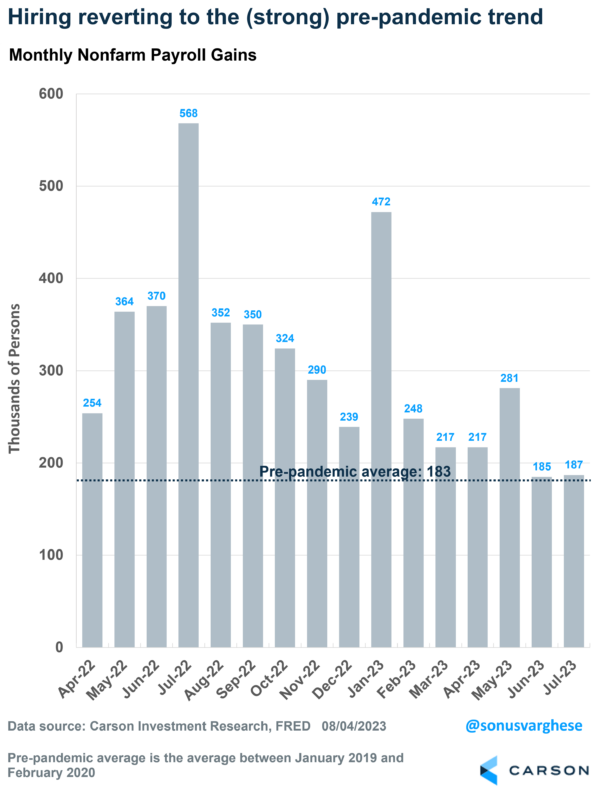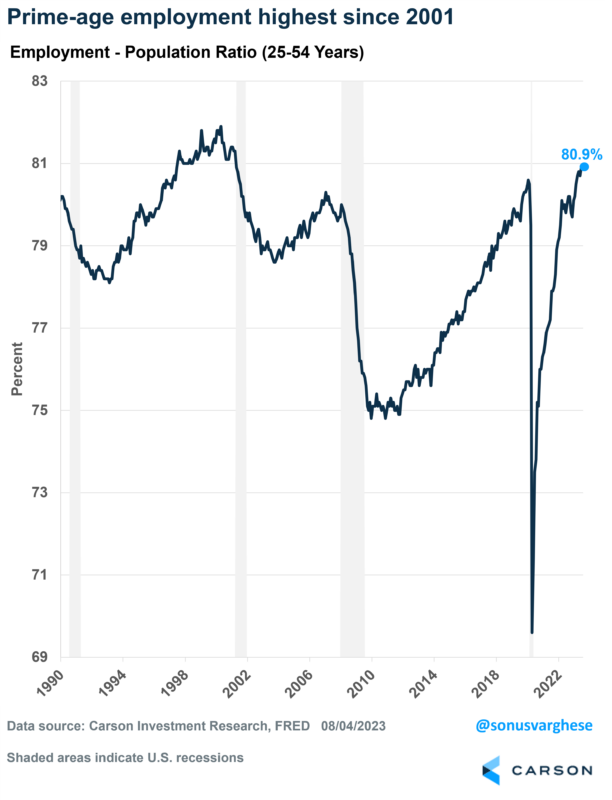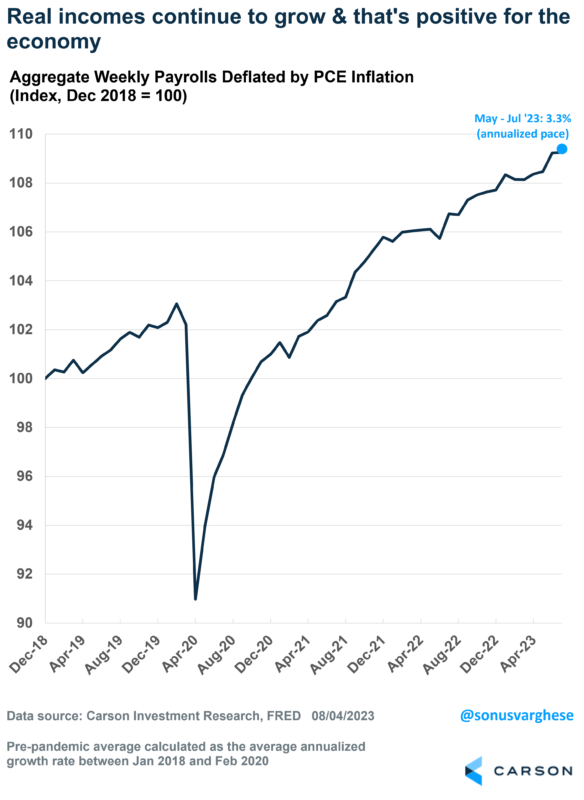The economy created 187,000 jobs in July, slightly softer than the 200,000 that economists expected. The last couple of months were revised lower, and so it’s always helpful to take a 3-month average, which is now running at 218,000. That’s stronger than the pre-pandemic average of 183,000.
In short, job growth remains strong. You will hear some people heralding this as the onset of a recession, but more likely this is just normalization of the economy rather than weakness. The report aligns with what we wrote in our Mid-Year 2023 Outlook, not to mention the title: “Edging Closer to Normal”.
The private sector created 172,000 jobs in July, up from 128,000 in June. On a sector level, job growth this year has been driven by non-cyclical areas like health care, education, and government. These sectors had lagged in the early recovery, accounting for just 13% of jobs created in 2021, and 25% in 2022. Over the first 7 months of this year, they’ve accounted for more than 50% of jobs created. July didn’t buck that trend, with health care seeing 100,000 jobs created. Government jobs were on the softer side, rising 15,000 in July versus an average of 53,000 between April and June.

Stay on Top of Market Trends
The Carson Investment Research newsletter offers up-to-date market news, analysis and insights. Subscribe today!
"*" indicates required fields
The cyclical areas of the economy, especially construction, manufacturing, and leisure and hospitality, remain on the softer side, with job growth adding up to 34,000 across these three sectors. So far this year, these sectors have accounted for about 20% of job creation (not exactly “weak”), versus 36% in 2022 and 43% in 2021.
Again, the theme is normalization.
The Best Labor Market Since the Late 1990s
The unemployment rate fell to 3.5%, not far from 50+ year lows of 3.4%. What is amazing is that the unemployment rate is slightly below where it was in June 2023, when the Fed really started to get aggressive with rate hikes.
The unemployment rate can be impacted by people leaving the labor force (technically defined as those “not looking for work”) and an aging population. I’ve discussed in prior blogs how we can get around this by looking at the employment-population ratio for prime age workers, i.e. workers aged 25-54 years. This measures the number of people working as a percent of the civilian population. Think of it as the opposite of the unemployment rate, and because we use prime age, you also get around the demographic issue.
The good news is that the prime-age employment-population ratio remained at 80.9%. That is higher than at any point since May 2001. It was actually falling at that time, and didn’t recover until now. This is the best indication that the labor market remains very healthy, and probably in the best shape since the late 1990s.
Bottom Line: All Signs Point to a Strong Economy
The US economy runs on consumption, and for that you need income. The good news is that income growth appears to remain strong and looks to be running ahead of inflation. In fact, wage growth rose 0.4% in July. Monthly numbers can be volatile, but the 3-month annualized pace is 4.9%.
You combine strong wage growth with strong employment, and that translates to strong income gains across the entire economy. Over the last 3 months, overall income growth for all workers is running at a 5.3% annual pace. Meanwhile, headline inflation is running close to 2.0%. The difference between the two tells you how fast incomes are growing after adjusting for inflation, and that’s running above a 3% annual pace over the past 3 months.
In my opinion, that’s your simplest measure of underlying economic growth and should tell you things are ok. Normalization is not the same as weakness.
1858134-0823-A





